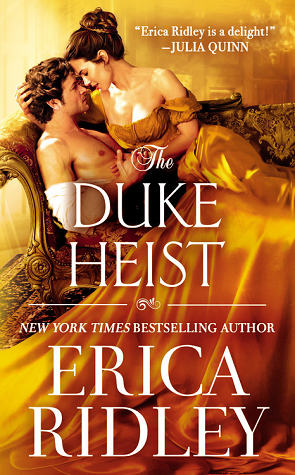April French doesn’t do relationships and she never asks for more.
A long-standing regular at kink club Frankie’s, she’s kind of seen it all. As a trans woman, she’s used to being the scenic rest stop for others on their way to a happily-ever-after. She knows how desire works, and she keeps hers carefully boxed up to take out on weekends only.
After all, you can’t be let down if you never ask.
Then Dennis Martin walks into Frankie’s, fresh from Seattle and looking a little lost. April just meant to be friendly, but one flirtatious drink turns into one hot night.
When Dennis asks for her number, she gives it to him.
When he asks for her trust, well…that’s a little harder.
And when the desire she thought she had such a firm grip on comes alive with Dennis, April finds herself wanting passion, purpose and commitment.
But when their relationship moves from complicated to impossible, April will have to decide how much she’s willing to want.
Review:
Oh, how I love this book – let me count the ways.
The quickfire oh-so-good:
- First, this is an incredibly sweet romance. It’s a kink-based relationship and the love and care are utterly melt-worthy.
- Romance featuring a trans woman, written by a trans woman! Woo!
- It does not read like a debut at all. The voice is assured, and considering some of the tricks Aimes pulls off? Woah.
- One of the most interesting things, as a long-time romance reader, is the way she plays with narrative. The story isn’t completely linear, but it’s not a chopped salad of events, either. Everything makes sense, and the way it plays with conflict and expectations is amazing.
- Speaking of – reader expectations are subverted on the regular in the most interesting way.
- With the non-traditional narrative and subverted expectations, the conflict comes from places you rarely see it, and it’s worked through in similarly non-traditional ways. I would love to get into more details, but the last thing I want to do is spoil it for anyone, please forgive.
- Dennis is a Black millionaire and April is a white trans woman, and they recognize that they’ve both faced oppression and microaggressions while also recognizing that one person’s experience doesn’t equal the other’s. That, being white, April doesn’t have the same interactions with police that Dennis does. That Dennis will never know what it’s like to move through the world, and more specifically Texas, as a trans person.
- The bits that could be repetitive aren’t, and it’s so carefully plotted.
- Both characters go to therapy for great reasons! And we see two therapy sessions with different people and dynamics! And Dennis gets a Dom mentor to go over the emotional side of being a top, which I’ve never seen before!
- Each character has a bestie, but they are very different, not only from the person they’re besties with, but the relationship itself. Jason is a white guy who has been friends with Dennis forever and they can read each other’s moods and expressions with ease. Fatima is a hijabi woman who’s lunch friends with April at work, and over the course of the book we see their relationship deepen and grow.
- …did I mention that it’s sweet and melt-worthy?
The only less-than-perfect things for me are details of a subplot and not even worth mentioning here.
If you like romance and are open to reading a (sweet!) kink-based relationship, you have to give For the Love of April French a try, and feel free to shout my way on social media as you do!
Content notes: BDSM/kink including impact play; mentions of surgery; misgendering; a short, mini panic attack on the page
Thanks to Carina Press and Netgalley for providing a review copy.



 Jack is an ass who’s always ready with a sly insult, who can’t have a conversation without arguing, and who Oscar may or may not have hooked up with on a strict no-commitment, one-time-only basis. Even if it was extremely hot.
Jack is an ass who’s always ready with a sly insult, who can’t have a conversation without arguing, and who Oscar may or may not have hooked up with on a strict no-commitment, one-time-only basis. Even if it was extremely hot. Chloe Wynchester is completely forgettable—a curse that gives her the ability to blend into any crowd. When the only father she’s ever known makes a dying wish for his adopted family of orphans to recover a missing painting, she’s the first one her siblings turn to for stealing it back. No one expects that in doing so, she’ll also abduct a handsome duke.
Chloe Wynchester is completely forgettable—a curse that gives her the ability to blend into any crowd. When the only father she’s ever known makes a dying wish for his adopted family of orphans to recover a missing painting, she’s the first one her siblings turn to for stealing it back. No one expects that in doing so, she’ll also abduct a handsome duke. Joe Peluso has blood on his hands. But lawyer and psychologist Neha Ahluwalia is determined to help him craft a solid defense…even if she can’t defend her own obsession. Because Joe took out those Russian mobsters for good reason–those six bad guys were part of the ruthless clan of bear shifters who control Brooklyn’s Russian mafia. His vigilante justice has earned him countless enemies in New York’s supernatural-controlled underworld, and no friends in a government that now bends to Russia at every turn.
Joe Peluso has blood on his hands. But lawyer and psychologist Neha Ahluwalia is determined to help him craft a solid defense…even if she can’t defend her own obsession. Because Joe took out those Russian mobsters for good reason–those six bad guys were part of the ruthless clan of bear shifters who control Brooklyn’s Russian mafia. His vigilante justice has earned him countless enemies in New York’s supernatural-controlled underworld, and no friends in a government that now bends to Russia at every turn. Sure, The Love Study has a sweet couple whose romance I enjoy, but the way it examines the nature of love is even better.
Sure, The Love Study has a sweet couple whose romance I enjoy, but the way it examines the nature of love is even better. Michele Harper is a female, African American emergency room physician in a profession that is overwhelmingly male and white. Brought up in Washington, DC, in an abusive family, she went to Harvard, where she met her husband. They stayed together through medical school until two months before she was scheduled to join the staff of a hospital in central Philadelphia, when he told her he couldn’t move with her. Her marriage at an end, Harper began her new life in a new city, in a new job, as a newly single woman.
Michele Harper is a female, African American emergency room physician in a profession that is overwhelmingly male and white. Brought up in Washington, DC, in an abusive family, she went to Harvard, where she met her husband. They stayed together through medical school until two months before she was scheduled to join the staff of a hospital in central Philadelphia, when he told her he couldn’t move with her. Her marriage at an end, Harper began her new life in a new city, in a new job, as a newly single woman. Patients enter the medical system with faith that they will receive the best care possible, so when things go wrong, it’s a profound and painful breach. Medical science has made enormous strides in decreasing mortality and suffering, but there’s no doubt that treatment can also cause harm, a significant portion of which is preventable.
Patients enter the medical system with faith that they will receive the best care possible, so when things go wrong, it’s a profound and painful breach. Medical science has made enormous strides in decreasing mortality and suffering, but there’s no doubt that treatment can also cause harm, a significant portion of which is preventable. The United States went belly up 45 years ago when our power grid was wiped out. Too few live in well-protected isolation while the rest of us scrape by on the margins. The only thing that matters is survival. By any means. At any cost.
The United States went belly up 45 years ago when our power grid was wiped out. Too few live in well-protected isolation while the rest of us scrape by on the margins. The only thing that matters is survival. By any means. At any cost. The alert was first raised at six in the morning: a fire was tearing through the El Bordo mine. After a short evacuation, the mouths of the shafts were sealed. Company representatives hastened to assert that “no more than ten” men remained in the shafts at the time of their closure, and Company doctors hastened to proclaim them dead. The El Bordo stayed shut for six days.
The alert was first raised at six in the morning: a fire was tearing through the El Bordo mine. After a short evacuation, the mouths of the shafts were sealed. Company representatives hastened to assert that “no more than ten” men remained in the shafts at the time of their closure, and Company doctors hastened to proclaim them dead. The El Bordo stayed shut for six days.